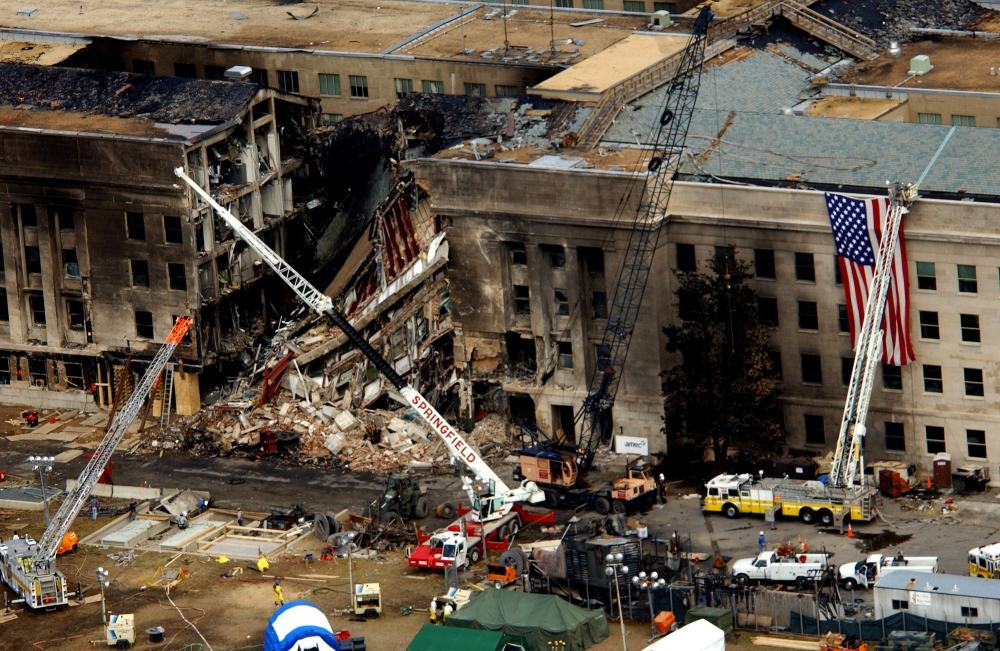September 11 in U.S. military history
1776: After the British capture Long Island, Continental Congressional delegates Benjamin Franklin, John Adams, and Edward Rutledge meet with British Adm. Lord Richard Howe for a peace conference at Staten Island. Hoping to bring a quick end to the conflict, King George granted Howe the authority to discuss peace terms, but not including the recognition of American independence. When Howe states that the loss of America would be like losing a brother, Franklin replies that “we will do our utmost endeavors to save your lordship that mortification.”
1814: New York is saved from a possible invasion by British forces when Commodore Thomas Macdonough’s squadron decisively defeats the British fleet led by Capt. George Downie in the Battle of Plattsburgh.
Downie’s flagship, HMS Confiance, was still under construction as his squadron sailed to battle, crewed by a hodgepodge of inexperienced provincial sailors and local volunteers, with infantrymen from the 39th Foot manning unfilled positions on the ship. Fifteen minutes into a duel with the American flagship USS Saratoga, depleted by a broadside that killed or wounded one-fifth of the American crew, a shot from Saratoga scored a direct hit on a 24-lb. cannon that Downie was sighting, knocking the gun off its carriage and killing the captain instantly. Macdonough uses his anchor cables to turn the ship, bringing a fresh, undamaged side to bear against Confiance, causing the British frigate — hit by some 250 cannonballs during the engagement — to surrender.
Confiance‘s cannon stands today at the U.S. Naval Academy outside Macdonough Hall, named in honor of the American commodore.
2001: When air traffic controllers discover that multiple passenger planes appear to have been hijacked, fighter jets scramble — but not in time to disrupt a complex terrorist attack that kills 2,997 Americans and injures some 6,000. At 9:37a.m., a Boeing 757 flown by Al Qaeda terrorists slams into the Pentagon, killing 55 military personnel and 70 civilian employees. The area hit by the plane was undergoing renovations at the time of the attack, which meant only a few hundred of what would normally be around 5,000 occupants were endangered. Structural reinforcements and a sprinkler system had recently been added – in response to the 1995 Oklahoma City bombing – which increased survivability.
Although it is too late for the Pentagon, all U.S. military facilities worldwide are ordered to enter Force Protection Condition “Delta” – the highest level of readiness for a possible terrorist attack. Defense Secretary Donald Rumsfeld increases the military alert level from DEFCON 5 (the lowest state of military preparedness) to DEFCON 3. Although the Russians would typically match the increase, President Vladimir Putin notifies George W. Bush that he would order his forces to stand down and denounces the terrorist attack. A report of a possible truck bomb attack targeting the North American Aerospace Command (NORAD) headquarters in the Cheyenne Mountain Complex leads to the first time the facility closes its massive blast doors, which are designed to withstand a nuclear attack. NORAD now controls of all American air space as combat air patrols guarded the skies and enforced a nationwide no-fly-zone.
2012: Terrorists launch a coordinated assault on a U.S. government compound in Benghazi, Libya. Although the battle rages for hours, Washington D.C. prevents the military from mounting any kind of effective response. Two CIA contractors, retired Navy SEALs Glen A. Doherty and Tyrone S. Woods, are killed as are foreign service officer Sean Smith and Ambassador Chris Stevens.

Today’s post is in honor of Lt. Cmdr. Otis V. Tolbert Jr. was the son of a Naval aviator, playing football for the Fresno State Bulldogs before receiving his commission in the Navy. Wrecked knees from football kept him out of a pilot seat, so he joined Naval intelligence. On this date, the 38-year-old Lemoore, Calif. native was the assistant officer in charge of the Chief of Naval Operations Intelligence Plot when American Airlines Flight 77 slammed into the Pentagon, killing 125 service members and civilians on the ground. Today, the Pentagon’s Joint Intelligence Operations Center is named in his honor.
